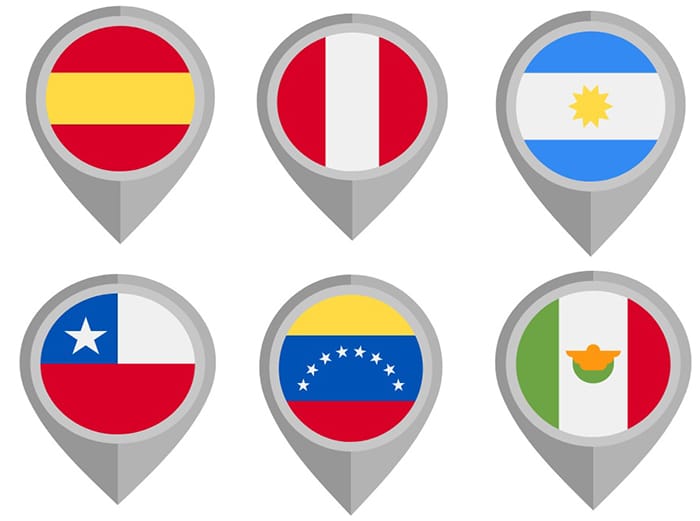Need to translate your website, leaflet or manual users into Spanish? But which Spanish? Iberian, Argentinian, Chilean or Mexican Spanish?
Wanting to translate your website, brochure or user manuals into Spanish? But which Spanish? Iberian, Peruvian, Argentinian, Chilean, Venezuelan or Mexican?
With more than 500 million speakers around the world, Spanish is the third most widely spoken language in the world, after English and Chinese. This Romance language is the official language in 21 countries and can vary considerably in use from one country to another.
Grammatical differences
In Spanish, regardless of country, there are five ways to say “you”, depending on the number of people being addressed, how well the people communicating know each other, and which country they are in or from.
• “usted” is used to address one person in a formal context, both in Spain and Latin America.
• “tú” is used to address one person in an informal context in most Spanish-speaking countries except Argentina, Uruguay and, to a lesser extent, Paraguay, where “vos” is used, with its own special conjugation. It is very important to be aware of and adhere to these regional differences, and even more crucial when it comes to marketing communications.
• In Spain, the plural equivalent of “tú” is “vosotros”, when addressing several people informally, whereas in Latin America “ustedes” is always used either in informal or formal contexts.
• Keep this in mind as it will determine the way you speak and communicate with your clients, whether they are from Spain or Latin America.
Vocabulary differences
• When launching a new advertising campaign, a mobile phone company will have to pick sides: either “móbiles” in Spain, or “celulares” in Latin America.
• A computer company sells “ordenadores” in Spain and “computadoras” in Latin America.
• An automobile manufacturer makes “coches” in Spain, “autos” in Argentina, and “carros” in Colombia and Mexico.
These are just a few of a host of vocabulary differences to in the spoken and written Spanish used in Spanish speaking countries, not only between Spain and Latin America, but also between Central and South American countries, especially Mexico and Argentina.
Despite these differences, Spanish speakers can understand each other and communicate without significant difficulties whether they be Spaniards, Cubans or Equatorians. However, using the local regional variant can help put your clients more at ease, show greater understanding on your part, and thus build a closer relationship. When choosing the most accurate Spanish for your English-Spanish translation project, you should take two things into account: your budget and your target.
Decide on your budget
If you have a tight budget and little time, opt for a neutral Spanish. It will allow you to reach customers in both Spain and Latin America. Even if it doesn’t exist as a living language used in everyday communications, so-called universal Spanish is an artificial construct created to meet a commercial need. It will help you communicate at a lower cost. What you’re aiming for is the most neutral translation that will be commonly understood by the greatest number of people across all Spanish-speaking countries.
But at what cost?
Don’t forget that “universal” Spanish will be less impactful and effective than the regional variation specific to the targeted country. The credibility of your company is at stake and there is much to be gained from adapting your content to the targeted culture.
Know your target
Have a larger budget? If so, you should definitely translate your content into several regional variants. First of all, it is crucial to know which market(s) you are targeting. Once that has been established, work with translators immersed in the culture of your targets in order to correctly understand their habits, behavior and expectations. Localizing your content into your clients’ regional variant of Spanish will help you catch their attention and gain their trust, which translates into more sales and a more polished image of your brand.
Cultures Connection helps you choose the most accurate Spanish adapted to your needs and targets and entrusts your project to a native professional translator from the country you want to reach.
Discover our translation company.




